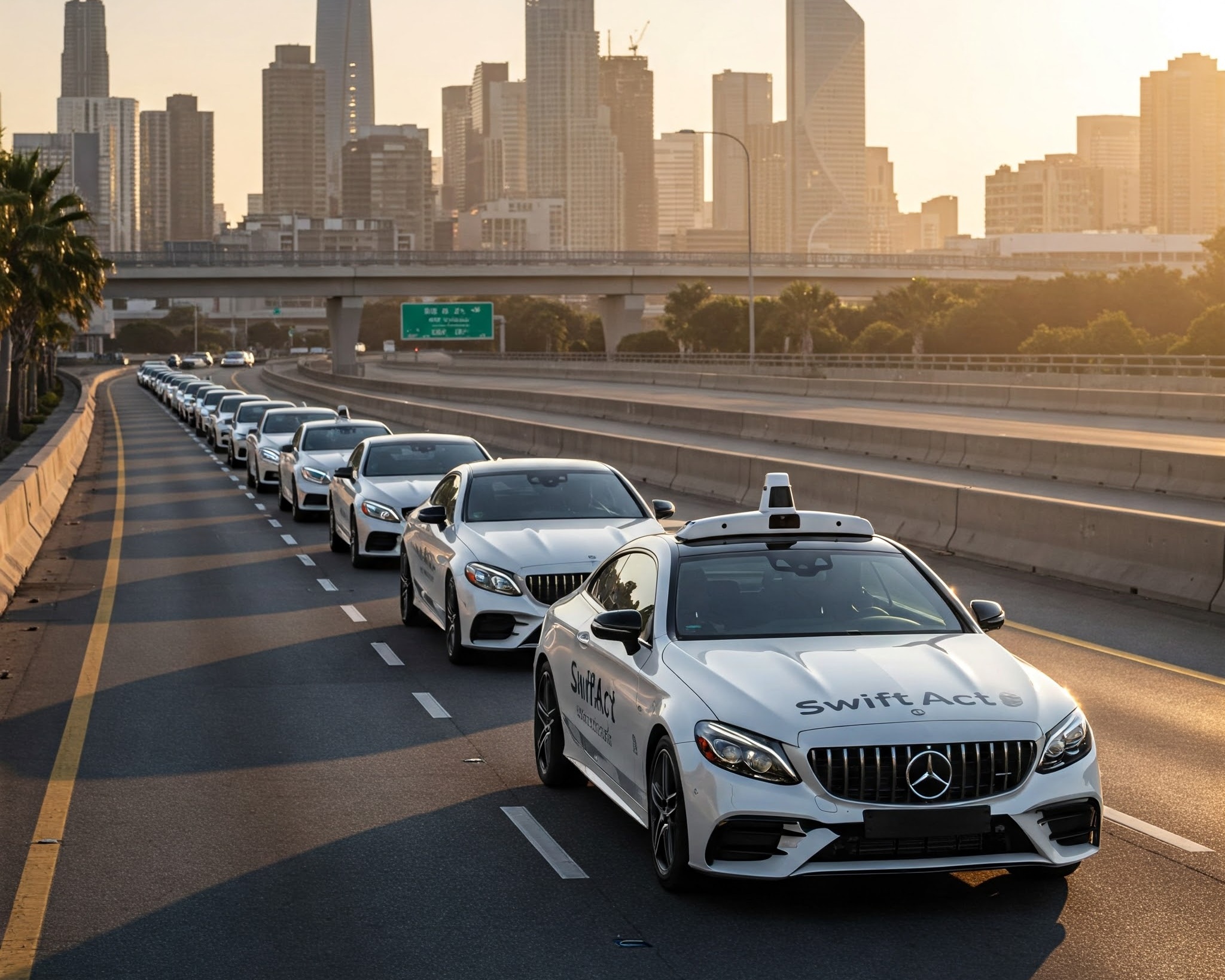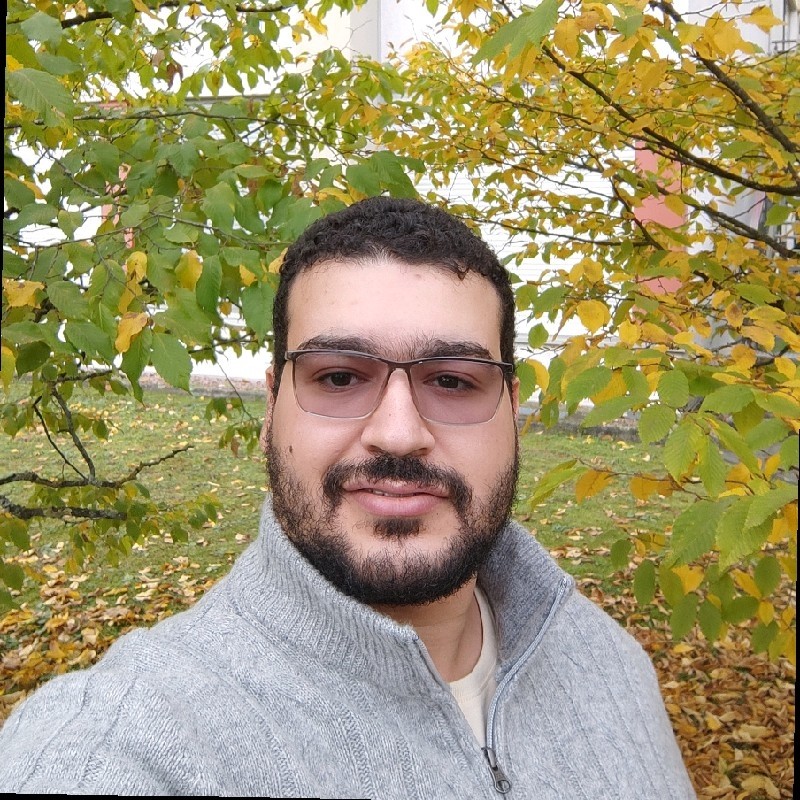Project Overview
The CARLA Platoon System is an advanced autonomous vehicle platooning implementation using the CARLA simulator (version 0.9.14). This system enables multiple vehicles to form a coordinated convoy where a lead vehicle guides the platoon while follower vehicles maintain consistent gaps and follow the same trajectory.
Core Objectives
- Implement a leader-follower platoon system with the lead vehicle in autopilot mode
- Enable vehicle-to-vehicle (V2V) communication for coordination
- Develop adaptive control algorithms for maintaining safe distances
- Create realistic simulation scenarios within Town06_Opt map
- Design a modular architecture for easy expansion and testing

Project Objectives
The primary goal of our AutoMerge project is to develop and implement advanced vehicle platooning systems with a special focus on the critical merging process.
Enhanced Fuel Efficiency
When vehicles move in close formation, air resistance is significantly reduced for following vehicles, resulting in substantial fuel savings and reduced emissions.
Improved Safety
Automated systems react faster than human drivers. Electronically linked vehicles can brake and accelerate in perfect synchronization, drastically reducing rear-end collision risks.
Increased Road Capacity
By safely reducing the gaps between vehicles, more vehicles can be accommodated on existing roads, improving traffic flow and reducing congestion.
Driver Comfort
Follower vehicles in the platoon allow drivers to relax as the system manages speed and spacing, creating a more comfortable driving experience.
Merging Process Excellence
The merging process is one of the most complex maneuvers in platooning systems. Our project focuses on perfecting these scenarios:
- Vehicle joining a platoon
- Vehicle leaving a platoon
Coordination & Stability
Our algorithms ensure effective coordination between vehicles for precise timing of merges, creating necessary gaps, and synchronizing speed adjustments for successful platooning operations.
Our Mission
Our project aims to develop merging algorithms that are absolutely safe, smooth, and efficient, preserving all the core benefits of platooning systems (efficiency, safety, road capacity) while enabling practical, widespread adoption of this technology on public roads.
Project Architecture
The system is organized into five main modules working together to enable advanced vehicle platooning capabilities:
Simulation Module
Interfaces with CARLA and manages the simulation environment
- World management
- Environment settings
- Sensor data processing
Control Module
Manages vehicle behavior and platoon dynamics
- Speed control
- Steering control
- Platoon gap management
Communication Module
Handles V2V information exchange
- Message broadcasting
- Protocol handling
- Data serialization
Scenarios Module
Implements specific testing scenarios
- Basic platoon
- Highway merge
- On-ramp merge
- Follower exit
Utils Module
Provides helper functions and shared utilities
- Coordinate utilities
- Data visualization
- Configuration tools
Android App Module
Real-time vehicle data monitoring application
- Vehicle speed display
- Front/rear gap monitoring
- Convoy vehicle count
Module Details
Simulation Module
The Simulation module interfaces with CARLA and manages the simulation environment. It handles the creation and management of the simulation world, weather conditions, and other environment settings.
Key Components:
- CARLA world management
- Weather and environment settings
- Sensor data processing
- Simulation lifecycle management
- Performance monitoring
Control Module
The Control module handles vehicle behavior, adjusting speed and steering to maintain platoon formation. It includes sophisticated algorithms for both longitudinal and lateral control.
Key Components:
- Longitudinal controller (speed/distance)
- Lateral controller (steering/path following)
- Platoon gap management
- Leader vehicle speed control
- Safety intervention system
Communication Module
The Communication module simulates V2V communication between platoon vehicles, allowing them to share position, velocity, and intention data in real-time.
Key Components:
- Message broadcasting system
- Data serialization/deserialization
- Communication protocol implementation
- Connection management
Scenarios Module
The Scenarios module implements specific testing scenarios for the platoon system, creating realistic situations to evaluate performance.
Key Components:
- Basic platoon scenario on curved roads
- Highway merge scenario
- On-ramp merge scenario
- Follower exit scenario
- Scenario configuration
- Event triggering
- Performance metrics collection
Utils Module
The Utils module provides shared functionality used across other modules, offering common services and algorithms.
Key Components:
- Coordinate transformations
- Logging functionality
- Configuration management
- Path planning algorithms
- Visualization tools
Android App Module
The Android App module provides a mobile interface for real-time monitoring of vehicle data in the platoon system. It displays critical information to drivers and researchers for enhanced situational awareness.
Key Components:
- Real-time speed monitoring
- Front and rear gap visualization
- Convoy vehicle counter
- Responsive UI design
Implementation Phases
Our development journey followed a structured approach with six key phases, each building upon the previous to create a comprehensive platooning system.
Environment Setup
Initial StageEstablishing the foundational elements of the system including simulation environment and basic architecture.
Vehicle Management
FoundationCreating the basic vehicle control and positioning systems for coordinated movement.
Communication System
CoordinationEnabling information sharing between vehicles in the platoon for coordinated movement.
Advanced Control Algorithms
IntelligenceRefining the control systems for complex scenarios and adaptive behavior.
Scenario Implementation
Testing EnvironmentsCreating realistic testing situations for evaluation and demonstration.
Testing & Optimization
FinalizationEnsuring system reliability and performance through rigorous testing.
Scenarios
Basic Platoon Scenario
Basic platoon following a path with curves and turns. This scenario demonstrates the fundamental capabilities of the platoon system.
Highway Merge Scenario
Vehicle merging into an existing platoon on highway. This scenario tests the platoon's ability to adapt to new vehicles joining the formation.
On Ramp Merge Scenario
Vehicle merging into an existing platoon from an on-ramp. This scenario tests the platoon's ability to adjust to vehicles joining from access points.
Follower Exit Scenario
A follower vehicle leaving the platoon formation. This scenario demonstrates the platoon's ability to maintain stable formation as vehicles depart.
Our Team
Meet the talented team behind the AutoMerge project:

Ragab Hassan Elkattawy
Team Mentor
Team Members

Ayman Mohamed Elashry
Team Leader

Hossam Elmaghrabey
Team Member

Mahmoud Eid
Team Member

Tarek Masoud
Team Member

Ibrahim Ashour
Team Member

Abdelrahman Medhat
Team Member
Project Podcast
Listen to our detailed podcast about the AutoMerge project, available in both Arabic and English languages.
English Podcast
12:49Listen to our detailed explanation of the AutoMerge project, discussing the technical implementation, challenges, and future possibilities.
البودكاست باللغة العربية
07:04استمع إلى شرح مشروع AutoMerge باللغة العربية، بما في ذلك جميع جوانب تنفيذ النظام.
Audio Deep Dive
Listen to in-depth explanations of our technical approach, challenges, and solutions.
Multi-language Support
Access our content in both English and Arabic to suit your preference.
Your Feedback
We value your opinion! Please share your thoughts on our project and any suggestions you might have.
Video Demonstrations
Experience our advanced platoon system in action through these high-quality video demonstrations showcasing various real-world scenarios and tests.
Basic Platoon Movement
Demonstration of basic platoon movement along curved roads showcasing the fundamental capabilities of our system.
Highway Merge Scenario Top Down View
Demonstration of a vehicle dynamically merging into an existing platoon on a high-speed highway segment.
Highway Chase View
External chase view of the platoon maintaining formation while navigating highway conditions at high speed.
Highway First Person View
First-person perspective from inside a vehicle in the platoon, showing the driver's view during highway operation.
On Ramp Merge - Top Down View
Aerial view of a vehicle successfully merging onto a highway via an on-ramp and joining the platoon formation.
On Ramp Merge - Chase View
Dynamic chase camera view of a vehicle merging onto a highway and integrating into the platoon system.
On Ramp Merge - First Person View
First-person perspective of a driver as their vehicle merges onto a highway and joins the platoon system.
Follower Exit Scenario
Demonstration of a follower vehicle smoothly exiting the platoon formation while the remaining vehicles maintain stability.